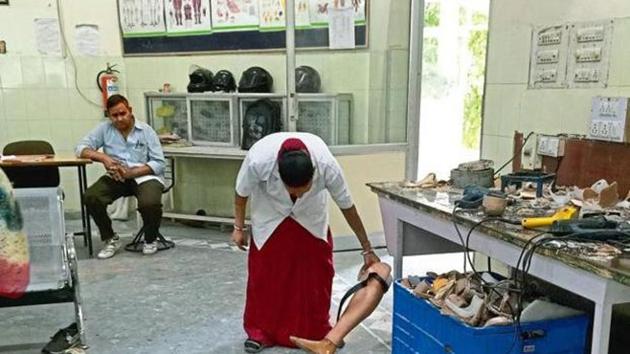London science exhibition to highlight Indian tradition of jugaad
Ancient Indian astronomy, Jain mathematics, emperor Ashok and Akbar’s ‘ecological foresight’ and instruments developed by scientists such as J C Bose and C V Raman will be among the other exhibits.
Jugaad, the overworked Hindi word signifying “innovative fix” will be one of the highlights around which a six-month long exhibition will be held in London Science Museum to showcase India's contribution to the world of science over the past 5,000 years.

Titled ‘Scientific Thought in South Asia’, the exhibition starts on September 27 and will feature 80 items.
Read: India placed at 43rd among 45 nations in global innovation index
Among the exhibits to be showcased in the British capital are the Jaipur foot, neonatal warming pouches, dabbas to transport hot food and even autorickshaws.

“The concept of jugaad, which is becoming increasingly important and popular across the world, will be seen in technological innovations for medicine, transport and communications in India. We will look at how jugaad has played an important role in contemporary innovation,” exhibition curator Matt Kimberley told HT in an email interview.
The exhibition will also highlight ancient Indian astronomy and India’s contribution in mathematics. Ideas, instruments and principles related to Jain mathematicians, astronomer-mathematician Brahmagupta, physician Susruta, emperors Asoka, Akbar, Jahangir and Jai Singh II will be showcased alongside those of the modern day scientists J C Bose, C V Raman, S N Bose and Srinivasa Ramanujan.
Last year, British Prime Minister Teresa May and Narendra Modi announced this exhibition.
Read: First in India: Punjab bags first UN agency-backed innovation centre
“From dabbas and neonatal warming pouches to the Jaipur foot prosthetic and even the autorickshaw all reflect the spirit of jugaad in innovative design,” Kimberley said.

Jaipur foot is a low-cost and user-friendly artificial limb invented by Jaipur-based traditional craftsman Ram Chandra Sharma in 1968 and popularised by orthopaedic surgeon P K Sethi, who went on to win the Magsaysay award for revolutionising the use of artificial limbs. Low-cost neonatal warming pouches were developed by the organisation Embrace in 2011. It is being seen as a major progress towards reducing infant deaths.
Objects on display come from the ancient, medieval, Mughal, British and modern periods, exploring India’s contributions to science and technology from the engineering feats of the Indus Valley Civilisation 5000 years ago to the work of the Indian Space Research Organisation (ISRO) today.
Ancient Indian astronomy and India’s contribution to mathematics are at the core of the exhibition.
Read: Science is well: Innovation is alive and kicking in India
“Astronomy was one of the most important areas of scientific observation and we are highlighting that through some of the exquisite astronomical instruments manufactured in India. Mathematics is also one of the most important areas. We will show how Indian thinkers defined mathematics from, quite literally, zero to infinity,” Matt Kimberley, curator of the exhibition, told HT.
The astronomical instruments on display in the exhibition will include a 19th century astrolabe designed and manufactured by Lala Balhumal Lahuri and a 16th century bhugolak (globe).
Other exhibits include the Bakshali script, considered the first evidence of the concept of zero and objects on Jain mathematicians’ concepts on infinity. The Bakhshali manuscript was discovered in 1881 in present-day Pakistan. The manuscript is written on birch bark and is considered to be too fragile to be examined by experts.
“The 16th century bhugolak reflects the melding of Hindu and Ptolemaic ideas about the cosmos in its design,” Kimberley said.
Star objects include a set of Indus Valley Civilisation standardised weights from around 3000 BCE, instruments used to carry out the Great Trigonometrical Survey of India in the 19th century, CV Raman’s original spectroscope that led to the discovery of Raman Effect and instruments designed and built by JC Bose to measure growth in plants.
“India’s role in the global story of science and technology began in the earliest days of civilisations but we will be showing how that role is as vital today as it was then,” Kimberley said.




